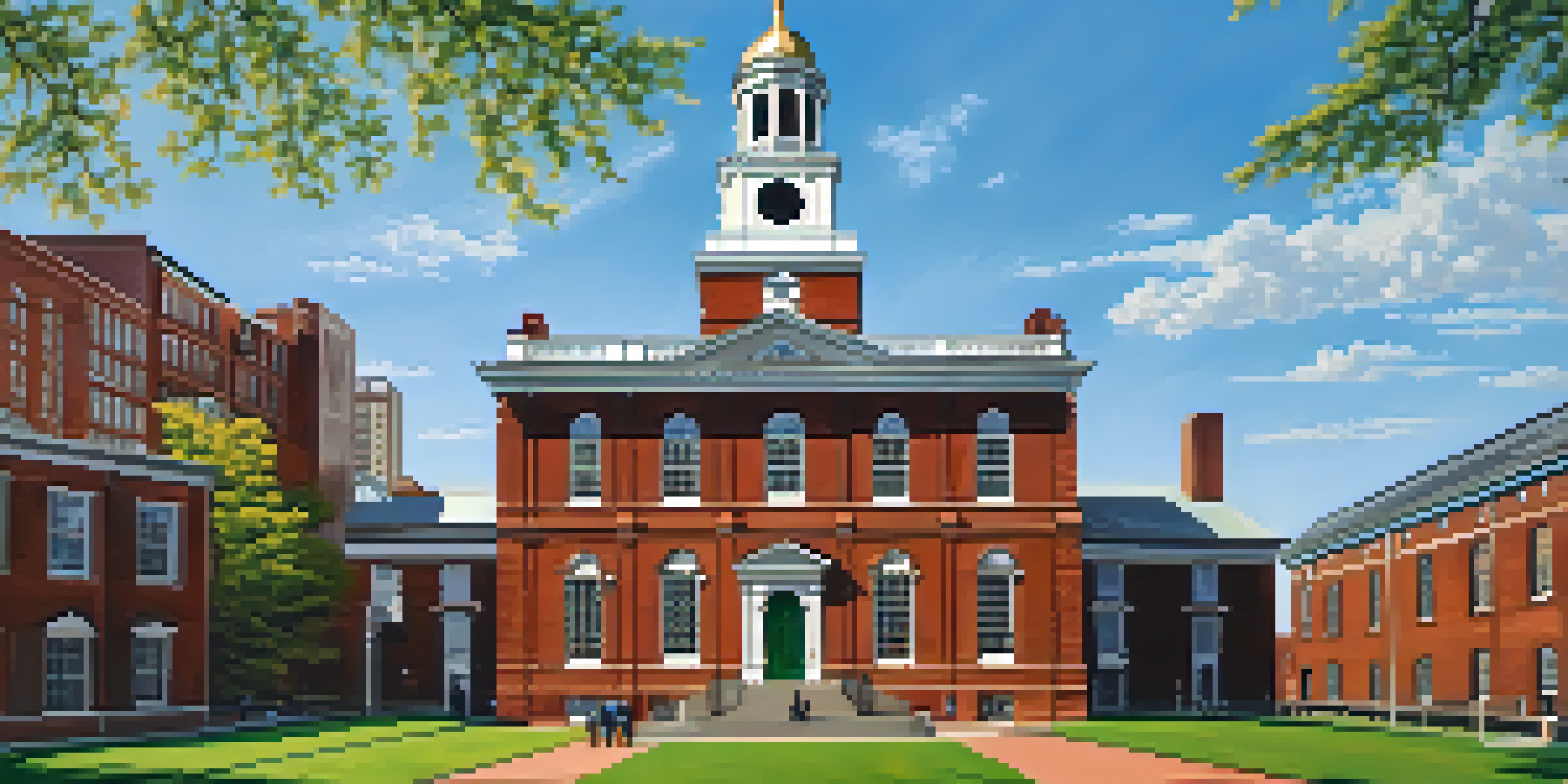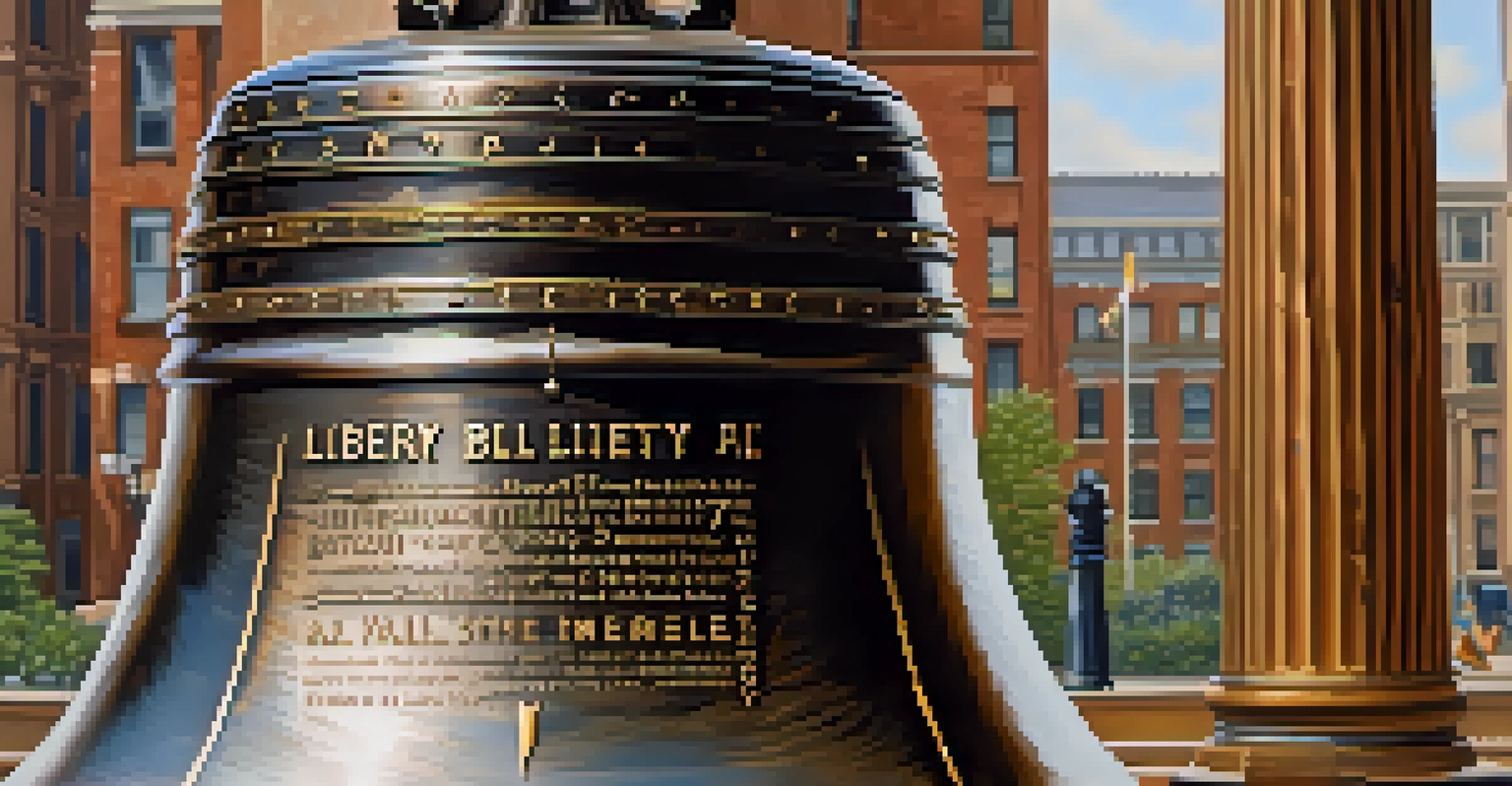Historic Buildings of Philadelphia: A Preservation Perspective

The Importance of Historic Preservation in Philadelphia
Historic preservation plays a vital role in maintaining Philadelphia's unique character. It helps protect the stories embedded in buildings that have witnessed centuries of change. By preserving these structures, we can honor the past while enriching our understanding of the city’s cultural heritage.
Preservation is a form of mutual respect between the past and the present.
Additionally, historic preservation fosters community pride and enhances the overall aesthetic of neighborhoods. When people see well-maintained historic buildings, it instills a sense of belonging and connection to the past. This emotional investment can lead to stronger community ties and increased local engagement.
Moreover, preserving historic buildings can have economic benefits for the city. Tourists are often drawn to cities with rich historical narratives, and by maintaining these sites, Philadelphia can boost its tourism industry while creating jobs in the preservation sector.
Key Historic Buildings in Philadelphia
Philadelphia boasts numerous historic buildings, each with its own unique story. The Liberty Bell Center, for instance, attracts millions of visitors each year, symbolizing American independence. Such landmarks not only represent significant events in history but also showcase stunning architecture that reflects the era in which they were built.

Another notable example is Independence Hall, where the Declaration of Independence was signed. This UNESCO World Heritage Site is a testament to the Founding Fathers' vision and commitment to democracy. Its preservation allows future generations to appreciate the birthplace of American governance.
Historic Preservation Boosts Community
Preserving historic buildings fosters community pride and strengthens local ties, enhancing the overall aesthetic of neighborhoods.
Then there's the Eastern State Penitentiary, which offers a glimpse into the evolution of the American prison system. Its Gothic architecture and innovative design were revolutionary for their time, making it a critical piece of Philadelphia’s historical narrative.
Challenges Faced in Preservation Efforts
While preserving historic buildings is essential, it comes with its share of challenges. Funding is often a major hurdle, as restoration projects can be expensive and time-consuming. Securing grants and financial support from both public and private sectors is crucial to ensure these buildings are maintained.
Historic preservation is a catalyst for neighborhood revitalization.
Additionally, there are often conflicting interests between development and preservation. As urban areas evolve, the demand for new construction can overshadow the need to protect historic sites. Balancing growth with preservation is a delicate dance that requires community involvement and engagement.
Furthermore, the physical condition of older buildings can pose significant challenges. Many structures require extensive repairs to meet modern safety standards while still maintaining their historical integrity. This intricate process often demands expertise in both restoration techniques and historical architecture.
The Role of Local Organizations in Preservation
Local organizations play a pivotal role in advocating for the preservation of historic buildings. Groups like the Preservation Alliance for Greater Philadelphia work tirelessly to raise awareness about the importance of these structures. They organize events, provide educational resources, and lobby for policy changes to protect historical sites.
These organizations also often mobilize community members to get involved in preservation efforts. By fostering a sense of stewardship, they encourage locals to take pride in their heritage and actively participate in maintaining historic buildings. This grassroots involvement can be incredibly powerful in influencing public opinion and policy.
Economic Benefits of Preservation
Maintaining historic sites attracts tourists, boosts the local economy, and creates jobs in the preservation sector.
Moreover, these groups often collaborate with government agencies to secure funding and support for preservation initiatives. Their networks and expertise can help navigate complex regulations and ensure that restoration projects are both effective and respectful of the original architecture.
Innovative Approaches to Preservation
In recent years, innovative approaches to preservation have emerged, blending tradition with modern technology. Adaptive reuse, for example, involves repurposing old buildings for new functions, breathing new life into them while preserving their historical essence. This strategy not only conserves resources but also revitalizes neighborhoods.
Digital preservation is another exciting development, allowing us to document and share our historic buildings in new ways. Virtual tours and 3D modeling enable people to explore these sites from anywhere in the world, increasing accessibility and interest in Philadelphia's rich history.
These innovative methods also encourage community engagement, as people can participate in preservation efforts digitally. By harnessing technology, we can inspire a new generation to appreciate and advocate for the protection of Philadelphia's historic architecture.
Community Involvement in Preservation
Community involvement is essential for successful historic preservation. When residents feel a connection to their neighborhood's history, they are more likely to support preservation efforts. Engaging local stakeholders in discussions about which buildings to protect can foster a sense of ownership and responsibility.
Events like historic walking tours can also raise awareness and appreciation for local architecture. These gatherings not only educate participants about the significance of their surroundings but also promote community bonding and pride. They serve as a reminder of the rich narratives that buildings can tell.
Innovative Strategies for Preservation
Adaptive reuse and digital preservation are modern approaches that breathe new life into historic buildings while engaging the community.
Furthermore, local advocacy groups can empower community members to voice their opinions on preservation issues. By providing platforms for discussion and action, these organizations help residents navigate the complexities of preservation and advocate for their beloved historic sites.
Looking Ahead: The Future of Philadelphia's Historic Buildings
As we look to the future, the preservation of Philadelphia's historic buildings faces both challenges and opportunities. The ongoing dialogue around urban development demands that we remain vigilant in our efforts to protect these treasures. Striking a balance between progress and preservation will require continued collaboration among community members, organizations, and government entities.
Moreover, public interest in sustainability and environmental impact is growing, which can positively influence preservation efforts. By highlighting the benefits of maintaining existing structures, we can advocate for a more sustainable approach to urban development.

Ultimately, the future of Philadelphia's historic buildings will depend on our collective commitment to preserving our heritage. By fostering a culture of appreciation and advocacy, we can ensure that these remarkable structures continue to tell their stories for generations to come.